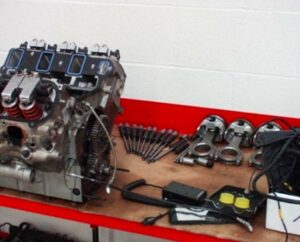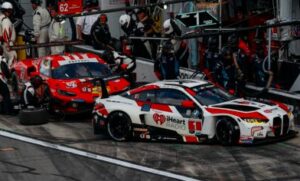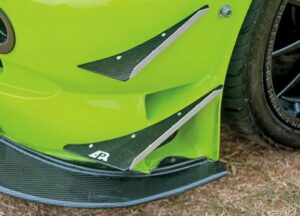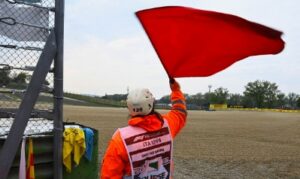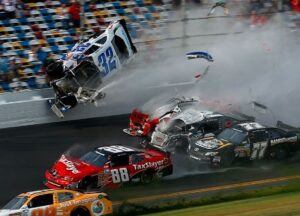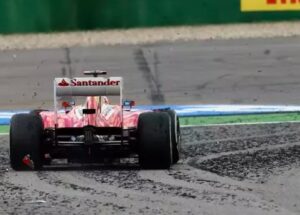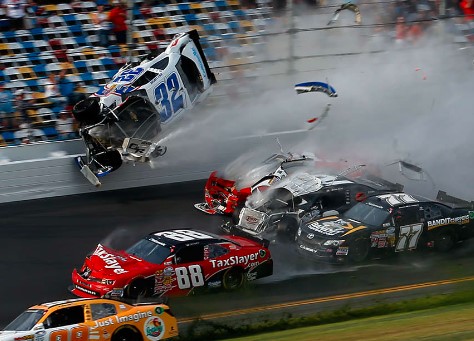
On-track pileups, also known as multicar wrecks or crashes, are one of the most dramatic and unpredictable moments in motorsports. Whether it’s the high-speed collisions of stock car racing or the tight corners of open-wheel racing, pileups can occur suddenly and with devastating consequences for drivers, teams, and spectators alike. In this article, we’ll delve into the dynamics of on-track pileups, explore the factors that contribute to their occurrence, and examine the impact they have on the world of motorsports.
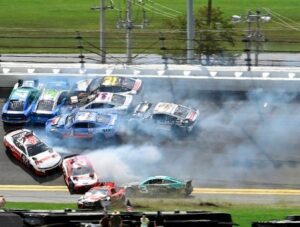
The Anatomy of an On-Track Pileup
At its core, an on-track pileup is a chain reaction collision involving multiple vehicles on the racetrack. Whether triggered by a single incident, such as a mechanical failure or driver error, or by a combination of factors, such as adverse weather conditions or track congestion, pileups can escalate quickly and involve numerous cars in a matter of seconds.
The Domino Effect
One of the defining characteristics of on-track pileups is the domino effect, where a single incident triggers a chain reaction of collisions involving multiple vehicles. Whether it’s a car spinning out of control, a sudden slowdown in traffic, or debris on the track, the slightest disruption can set off a cascade of events that leads to chaos and mayhem on the racetrack.
Limited Visibility and Reaction Time
Another factor that contributes to on-track pileups is the limited visibility and reaction time available to drivers in high-speed racing environments. Whether navigating through a pack of cars at close quarters or encountering sudden changes in track conditions, drivers must rely on split-second decisions and lightning-fast reflexes to avoid collisions and stay out of harm’s way.
Contributing Factors to On-Track Pileups
While on-track pileups can occur for a variety of reasons, several common factors contribute to their occurrence in motorsports. From track layout and design to driver behavior and external conditions, understanding these contributing factors is essential for mitigating the risk of pileups and ensuring the safety of drivers and spectators alike.
Track Layout and Design
The layout and design of the racetrack play a significant role in determining the likelihood of on-track pileups. Whether it’s the tight corners of a street circuit or the high-speed straights of an oval track, each track presents its own unique challenges and hazards that drivers must navigate to avoid collisions and stay on course.
Driver Behavior and Aggression
Driver behavior and aggression also play a significant role in the occurrence of on-track pileups. Whether it’s aggressive driving, reckless maneuvers, or retaliatory actions, the actions of individual drivers can escalate tensions on the racetrack and increase the likelihood of collisions and pileups.
External Conditions and Variables
External conditions and variables, such as weather, track conditions, and race conditions, can also contribute to on-track pileups. Whether it’s rain-slicked pavement, debris on the track, or poor visibility, adverse conditions can make it difficult for drivers to maintain control of their vehicles and avoid collisions with other cars.
The Impact of On-Track Pileups
On-track pileups have a significant impact on the world of motorsports, affecting drivers, teams, and fans alike. From the physical and emotional toll on drivers to the financial and logistical challenges for teams and organizers, pileups can have far-reaching consequences that extend beyond the racetrack.
Safety Concerns and Injuries
One of the most immediate concerns following an on-track pileup is the safety and well-being of the drivers involved. Whether it’s minor scrapes and bruises or more serious injuries requiring medical attention, pileups can result in significant harm to drivers and necessitate the deployment of safety personnel and medical resources to ensure prompt and effective treatment.
Damage to Vehicles and Equipment
On-track pileups can also result in significant damage to vehicles and equipment, leading to costly repairs and downtime for teams and drivers. Whether it’s bent chassis, damaged bodywork, or mechanical failures, pileups can put a strain on the resources of teams and sponsors and require extensive repairs and replacements to get back on track.
Disruption to Racing Events
In addition to the immediate impacts on drivers and teams, on-track pileups can also disrupt racing events and impact the schedule and logistics of motorsports competitions. Whether it’s delays in race proceedings, red flags, or cancellations, pileups can disrupt the flow of events and create logistical challenges for organizers and officials.
Thunderbird Speedway: A Case Study
As an example of on-track pileups in action, let’s take a look at Thunderbird Speedway, a popular dirt track racing venue known for its high-speed racing and tight corners. Located in Texas, Thunderbird Speedway has been the scene of numerous on-track pileups over the years, with its challenging layout and unpredictable track conditions presenting unique challenges for drivers and teams alike.
Tight Corners and Close Quarters Racing
One of the defining features of Thunderbird Speedway is its tight corners and close-quarters racing, which often leads to intense battles for position and frequent collisions among drivers. Whether it’s bumping and banging in the corners or jockeying for position on the straights, Thunderbird Speedway’s narrow track layout creates opportunities for pileups and chaotic racing action.
Unpredictable Track Conditions
Another factor that contributes to on-track pileups at Thunderbird Speedway is the unpredictable nature of its track conditions. Whether it’s changing weather patterns, shifting track surfaces, or debris on the racing line, Thunderbird Speedway presents a challenging environment for drivers to navigate, increasing the likelihood of pileups and collisions during races.
Conclusion
In conclusion, on-track pileups are a dramatic and unpredictable aspect of motorsports that can have far-reaching consequences for drivers, teams, and fans alike. Whether triggered by a single incident or a combination of factors, pileups are a reminder of the inherent risks and challenges of racing at high speeds and the importance of safety and preparedness in motorsports. So the next time you watch a race, keep an eye out for on-track pileups and marvel at the skill and bravery of the drivers who navigate through the chaos to emerge unscathed.

